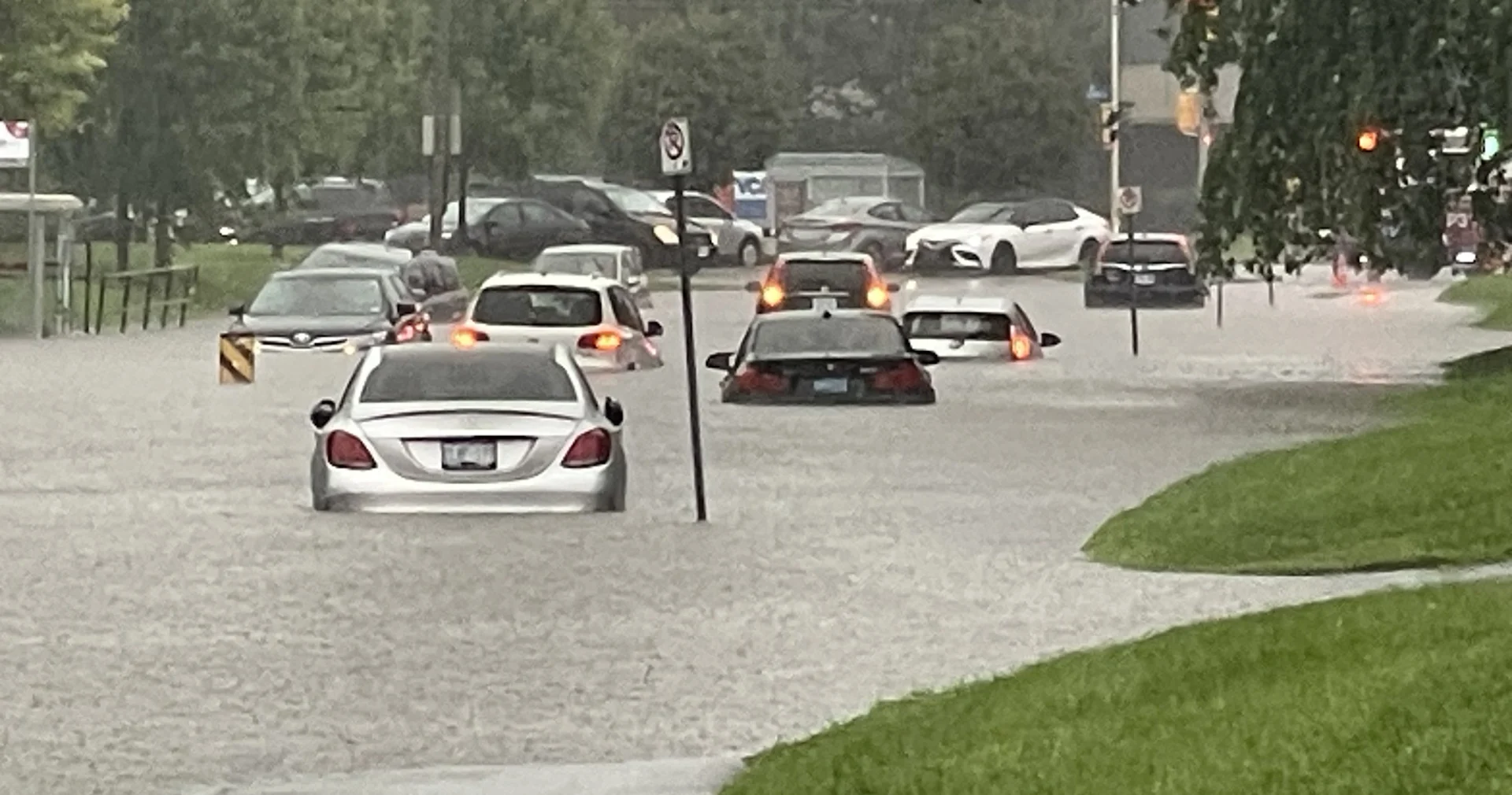
Deluge of damage claims pouring in after flash floods cause sewage 'mayhem'
Ottawa restoration companies are inundated with calls from households beset by sewage backup from Thursday's flash floods, which caused "catastrophic" damage to some homes.
Deven Raval, owner of PuroClean, called it "mayhem." He said his company normally deals with five or so calls per day. But this has been different.
PHOTOS: Downpours lead to flooding in the National Capital Region
"My phone's going crazy," he said, as rings repeatedly interrupted an interview. He'd already fielded about 70 calls as of Friday morning. He said four of every five relate to sewage.
"Something went very wrong with the sewer systems in Ottawa," Raval said.
Ottawa faced more than 77 millimetres of rainfall on Thursday. Videos of water gushing out of bathtubs and toilets gripped and revolted local social media users. Now, Raval's crews are seeing the aftermath: damaged flooring, furniture and personal possessions after unsanitary water surged up to fill basements.
"We're not talking portions of basements — we're talking entire basement," he said. "Six to eight inches of water came in, which is quite severe … that's a huge volume of water kicking back."
Dirty water presents health risk
Richard Green, CEO of Ottawa's franchise of Paul Davis restoration, is seeing the same flood of calls. He said about 100 came in before noon on Friday, and he was expecting about 50 more.
"It's widespread. It's all over the place," he said. "There's varying degrees of damage. Some of them are pretty catastrophic where there's been a lot of water going into people's houses and it's upset their whole routine and their lives."
He said some of the calls relate to water running into homes from outside, though his crews have also seen sewage water backflowing into homes and basements. That can be a health risk.
"People want to just think it's storm sewer and it's water runoff," he said. "But when the storm sewers overflow, they do have the possibility of mixing in with the sewage."
SEE ALSO: Hidden Underworld: Diving deep into Toronto’s underground sewer system
Green said that water can carry pathogens. His crews go in fully protected in masks, gloves and suits.
Raval said residents should also take precautions: gloves, shoes, thorough handwashing.
"You've got to be very careful. A lot of people were literally walking in their basements not understanding that this was sewage," he said.
"If you've got cuts or anything like that on your feet, you don't know the bacteria that's in that water … the health risk is quite, quite serious."
WATCH: Go underground into the sewers of Canada's biggest city
What to do as call volumes create delays
Green's crews are triaging calls to deal with emergencies first. He said they'll work on about three dozen jobs per day for at least the next three days.
"It's not ideal, because what we want to do is we want to get there as quickly as possible," he said. "There's all kinds of other damage that can happen if you leave these things too long — things like mould."
Raval said the storm itself slowed down attempts to respond to damage on Thursday, as his crews faced flooded roads that extended their response times. He agreed with Green that time is the enemy.
"Remember, you've got pathogenic water," he said. "Once that dries out, you're aerosolizing those pathogens, you're breathing in those contaminants. There's the odour and then, obviously, our homes are built of a lot of organic material. You've got mould and fungi that grows afterwards. You have to address this quickly."

Flooding in Ottawa on August 10, 2023. (Image courtesy of @freewillymj via Twitter.)
Green said residents can take action to limit the damage while they're waiting: use a wet-dry vac with "good sucking ability" to remove as much standing water as possible, separate wet from dry possessions and open up windows to "allow the house to breathe."
He said a typical claim can cost anywhere between $5,000 and $10,000, including emergency work to remove any moisture and demolition of affected flooring and walls. Raval said larger properties with significant damage can cost much more.
"That's just the emergency mitigation work," said Raval. "You've got the cost if the family can't stay there for a particular time."
According to Green's estimate, it could take three months to completely finish all the work to restore the homes damaged in Thursday's storm.
"Once we remove the risk of the water damage, people will have to walk on concrete floors or have a wall cut out for a while," he said, "but you can live with that if you need to."
Header image submitted by Chantal C in Ottawa, Ontario.
This article, written by Arthur White-Crummey, was originally published by CBC News on August 11, 2023.









